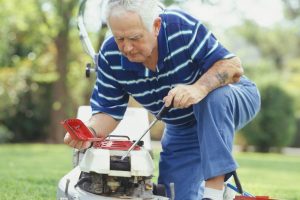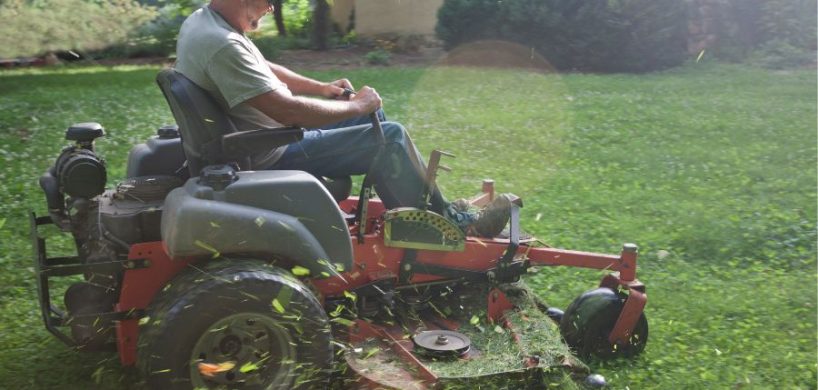It happens to the best of us. You decide to trim your lawn to perfect, and when you get ready to start work- your lawn mower develops a mind of its own. It just won’t move!
Frankly, it’s frustrating and puzzling when your riding mower won’t move. A riding lawn mower is essential for many homeowners, streamlining the lawn maintenance task.
It’s crucial to know what to do when your lawn mower encounters issues preventing it from functioning properly. Luckily, you’ve got us! This article delves into why your riding mower might be stationary.
Interested in greenhouse farming and how to grow plants with solar heat lamps? Check these articles.
Operational Errors in Riding Mowers
Even the most robust and well-maintained riding mowers can be immobile due to operational errors. Let’s take a deep dive into some common operational mishaps and how they impact the mower’s ability to move forward:
Drive Belt Mismanagement
The mower drive belt is a key component that connects the engine pulley to the transmission pulley. When not properly aligned, loose, or worn, the drive belt can’t transfer the necessary power to propel the mower forward. This is especially prevalent in riding mowers that have experienced extensive use or haven’t been maintained routinely.
Hydraulic Fluid Neglects
Some advanced lawnmowers use hydraulic systems to aid in movement. If the hydraulic fluid level is low or the fluid becomes contaminated, it may hinder the mower’s operational efficiency. It also makes it difficult or impossible to move. Hence, you should regularly check and refill hydraulic fluid to enhance smooth operation.
Ignition Missteps
The spark plug wire ignites the fuel-air mixture in the mower’s engine. A damaged or disconnected spark plug wire prevents the mower from starting, making it impossible to move forward.
Transmission Pulley & Engine Pulley Misalignment
These pulleys are pivotal in transferring power. If misaligned, damaged, or obstructed, the power transmission stops, rendering the lawn tractor stationary.
Safety Mechanisms
Modern lawn mowers have safety features to prevent accidents. One of these is the mower seat detection system. If the system senses that the mower seat is unoccupied, it won’t start or move, assuming there might be a risk of uncrewed operation.
Transmission Bypass Lever Oversight
The transmission bypass lever is a feature in many riding mowers that allows users to push the mower when the engine is off manually. However, if left engaged inadvertently, the lawn tractor won’t move even when the engine is on. Checking this lever’s position is often a simple yet overlooked solution.
Mower Deck Obstructions
The mower deck houses the cutting blades. While its primary function concerns mowing, any blockages or tangled debris strain the mower drive belt and other components. In such cases, moving forward may be challenging for the mower.
Friction Wheel Wear
The friction wheel plays a central role in converting engine power into movement. So, as it wears down over time or gets damaged, it reduces the mower’s ability to move, particularly in riding mowers that rely heavily on this component.
Mechanical Issues Affecting Riding Mowers

Mechanical complications are the primary reasons a riding mower won’t move forward. A well-functioning drive system is essential for the mower’s movement, and any issues within this system can lead to operational challenges. We’ll delve into some of the prominent mechanical problems:
Drive System Malfunction
At the core of every riding mower is its drive system, which propels it forward or reverse. Once any component within this system is compromised, the mower won’t move forward. Common problems include damaged or misaligned belts and pulleys and issues with the friction wheel.
Hydrostatic Transmission Issues
Riding mowers with a hydrostatic transmission rely on hydraulic fluid to transfer power from the engine to the wheels. If there’s a leak or the fluid is old and contaminated, it can cause inefficiencies in the transmission, hindering the mower’s ability to move. Regularly checking and maintaining the fluid can prevent such issues.
Engine Shaft Problems
The engine shaft is a pivotal component connecting the engine to the mower’s drive system. Hence, whenever it’s bent, damaged, or misaligned, it disrupts the power transfer. This makes it hard for the mower to move forward or reverse.
Malfunctioning Transmission
A mower’s transmission is like the gearbox in a car. It’s responsible for changing the mower’s speed and direction. When the transmission malfunctions, it prevents the mower from moving in either direction. This could be due to worn-out parts, lack of lubrication, or issues with the transmission pulley.
Wheel and Tire Issues
Wheels and tires are foundational to any riding mower, allowing for smooth movement across a lawn. Any problems in this domain hinder a mower’s capability of moving forward.
Friction Plate Concerns
Another important component of a mower is the friction plate. It drives power transmission to the drive wheels. When worn out or misaligned, the mower might lose its ability to move properly. Regular inspection and replacement when needed help you maintain consistent performance.
Drive Wheels Complications
Drive wheels bear the brunt of the mower’s weight and movement. So, if they are damaged, deflated, or misaligned, the mower prevents progress. It’s essential to check their condition and alignment regularly.
Obstructions and Debris
Any foreign objects lodged between the tires or wrapped around the axles can stop a mower in its tracks. Periodically inspecting and clearing the wheels of any obstructions may stop such halts.
Battery Concerns
A mower’s battery provides the essential spark to start the engine and powers other electrical components. It might fail to start or operate correctly if it’s weak or dead, even if the mower has a gasoline engine.
Fuel Filter and Electrical Sensors
Some modern mowers have sensors that monitor the condition of the fuel filter. If the filter is clogged and the sensor isn’t functioning properly, it causes the mower to stop moving.
Safety Switches and Wiring
These components ensure the mower operates under safe conditions. For instance, a seat switch might keep the mower from running if it doesn’t detect an operator. Faulty wiring or a malfunctioning switch inhibits mower operation.
Maintenance and Care
As a farmer or gardener, regular maintenance and care are indispensable when you want your tools to operate optimally.
For instance, the mower’s drive belt may become excessively worn or snap over time. An old belt might not provide enough friction to transfer power efficiently. This leads to a sluggish performance or the mower failing to move. Regularly inspecting the belt and replacing it with a new one when required ensures the mower runs smoothly.
Also, a clogged air filter restricts airflow to the engine. If the engine doesn’t receive the required air, it won’t function properly or die prematurely. Cleaning the air filter regularly and replacing it when necessary boosts optimal airflow and engine performance.
Finally, mowers with a hydrostatic drive, including zero-turn models, rely on hydraulic fluid for power transfer. It’s crucial to monitor and maintain the right fluid levels and ensure its quality. Old or contaminated fluid degrades the system’s performance, making regular checks and replacements vital.
Summary
A riding mower is a substantial investment in lawn care for efficiency and convenience. To safeguard this investment, you need to prioritize regular maintenance.
From replacing an old belt with a new one to ensuring the hydrostatic drive functions optimally, every aspect of care contributes to the mower’s overall performance. You can always keep your mower running smoothly when you adhere to a regular maintenance schedule and consult the owner’s manual for guidance.

